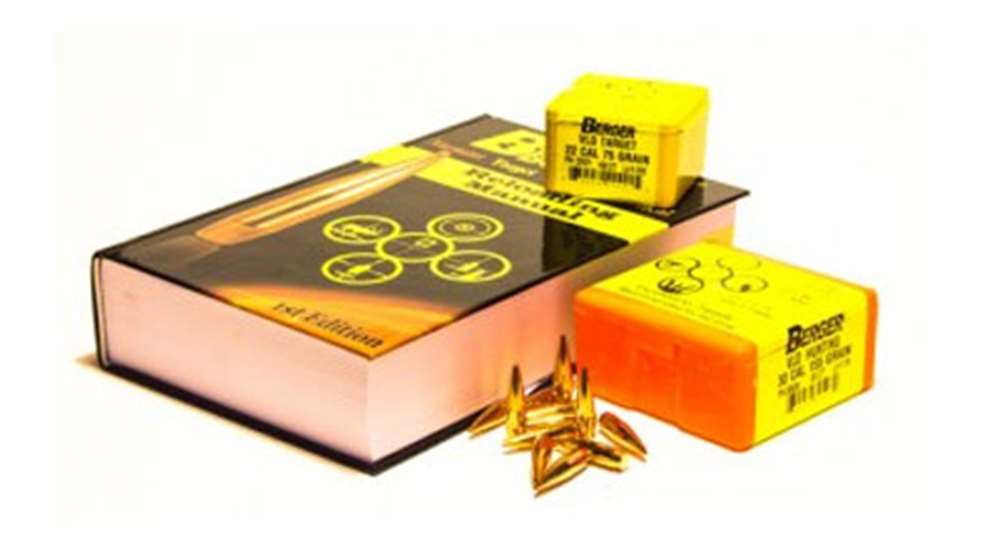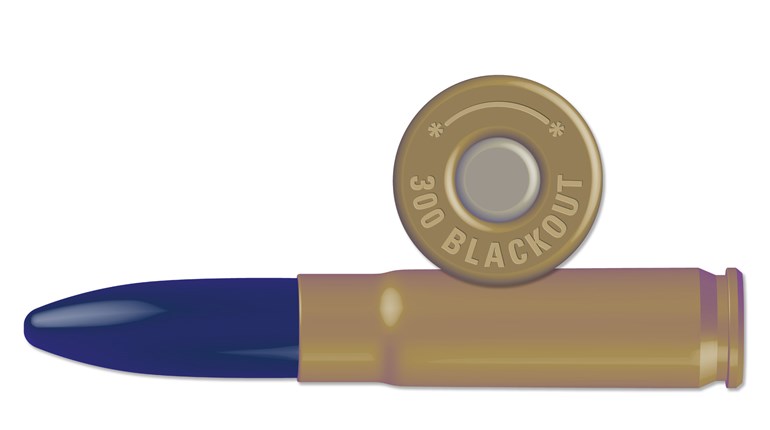
Almost eight years ago, I was approached by Berger about including its VLD bullets in a book several very experienced writers and I were working on. The book was conceptually supposed to cover every aspect of rifle bullets commonly used for hunting. At that time, most rifle shooters, hunters and I considered Berger bullets strictly for target shooting. We were wrong.
Berger bullets are exceptional target bullets for several reasons. Walt Berger, the company's founder, established extremely high quality-control standards to ensure every bullet is manufactured to exact tolerances. He is also one of the most accomplished benchrest shooters in the world.
But, Berger bullets became match winners for other reasons: like because of the legendary J4 jacket. More than 40 years ago, a man named Jim Spivey left Sierra Bullets and opened up a deep-hole draw house that manufactured dynamite caps, lipstick tubes and such. The no compete bullet-making clause Spivey signed with Sierra soon expired, and he began making bullet jackets. These jackets were known as J4 jackets because the four guys who formed the company all had first names that started with the letter "J."
J4 Jackets had a maximum total run-out of 3/10,000 inch or less at the base and 5/10,000 inch or less at the mouth. These gilding-metal jackets were received very enthusiastically by bulletmakers and benchrest shooters. Berger was one of the first to use them. His company still uses them to this day. Berger even supplies J4 Jackets to other bullet manufacturers.
The other thing that set Berger apart was the very low drag (VLD) bullet. In the mid 1980s Dr. Louis Palmisano teamed up with military ballistician William Davis to develop this bullet, which incorporated a secant as opposed to the common tangent ogive with a long, tapered boattail. Together, these features increased the ballistic coefficient of the bullet, giving it a laser-like trajectory and better wind resistance. Berger started making these super slippery bullets, too.
Berger asked whether its VLD bullets would be included in the book, because they were being used successfully by customers for hunting. I had serious doubts about the VLD's ability to effectively take big-game animals, a field test was suggested. In the end, I was stunned at how well these bullets killed hogs—so much so another hunt in New Zealand for red stag and feral goats was scheduled. After more than 50 animals were harvested using VLDs—in calibers ranging from .257 Roberts to .308 Win.—I was convinced, and can confirm Berger VLD hunting bullets tend to put game down faster than any other bullet I've used.
How do they work? How could this flat-shooting match bullet go against the laws of physics and demonstrate such effective terminal performance when it only retains about 50 percent of its weight? For starters, it's due to the VLDs streamlined shape or sharpness, which is able to penetrate deeper inside a critter before it begins to deform. Secondly, when the bullet does begin deforming, it does not really expand, it implodes.
You see, the hollow-point cavity in the Berger VLD is massive, and when its jacket gives way due to resistance, it collapses from the center. This generally occurs after about 3 to 4 inches of penetration. When the collapse occurs, the pure-lead core erupts. This eruption happens at a very high velocity compared to traditional expanding bullets, because it has not been slowed by traditional expansion. So, the resulting wound cavity is massive, and occurs on the side of the ribs where vital organs are housed. Penetration is moderate, but the resulting tissue damage is extensive. If you're looking for a long-range bullet capable of extreme lethality, the Berger VLD has no equal.
Folks looking for load data or related technical information on Berger bullets used to have to call or e-mail Berger for information. Very often, these questions were answered by Walt Berger himself, who is now semiretired, but still works as a consultant for the company. Now, you can have that type technical information right at your fingertips, because the company has just published its first load manual.
Not only does this 829-page manual contain load data for more than 70 cartridges, you'll find technical reloading information dealing with lot to lot variations in powder, the use of QuickLOAD software, powder burn rates and interesting information about cartridge overall length. The book also contains a comparison between G1 and G7 ballistic coefficients, barrel twist-rate information and 10 chapters dealing with various rifle shooting disciplines, all from trusted sources like John Barsness, John Haviland, Ron Spomer, Tom Burczynski, David Tubb, Robert Forker, Rick Jamison, Bryan Litz and many others.
As an added bonus, the book includes the story of Walt Berger, with whom I've had the privilege of shooting and hunting. I've heard his story from the source, and Berger has my respect. Not only is he a pioneer, this depression-era American built a respected and successful company and never borrowed a penny from anyone to do it. Yep, he built it. Berger is a gentleman and immeasurably humble. He has been gifted with one of the best trigger fingers ever bestowed on any man. If you like shooting little groups at long range, you need this book. After you read it, you'll never look at a Berger bullet the same way again.




































